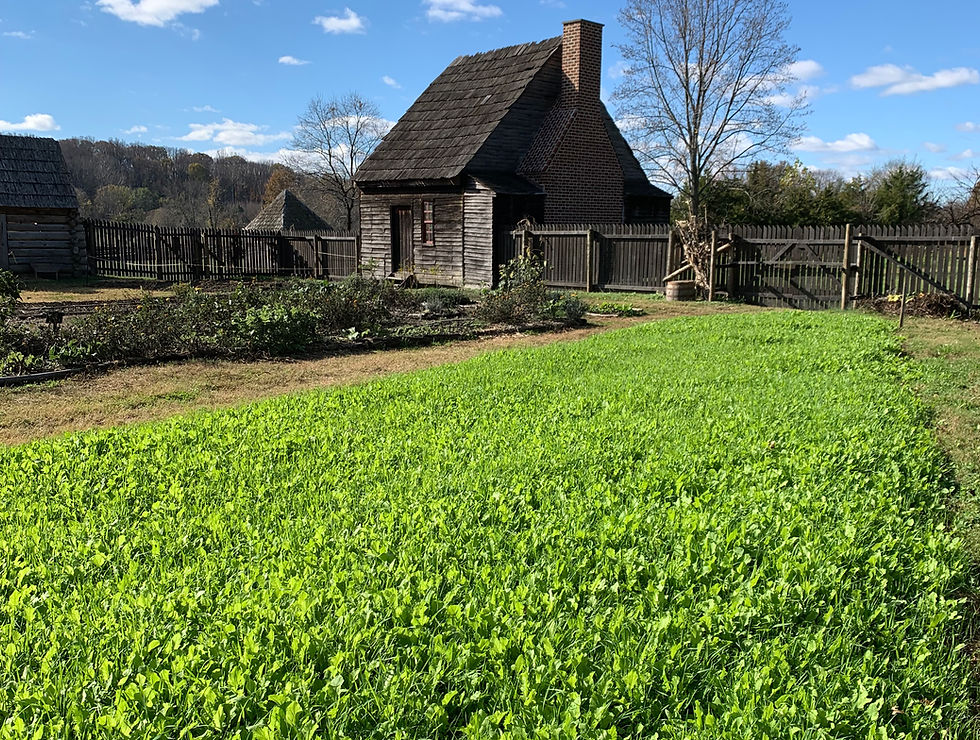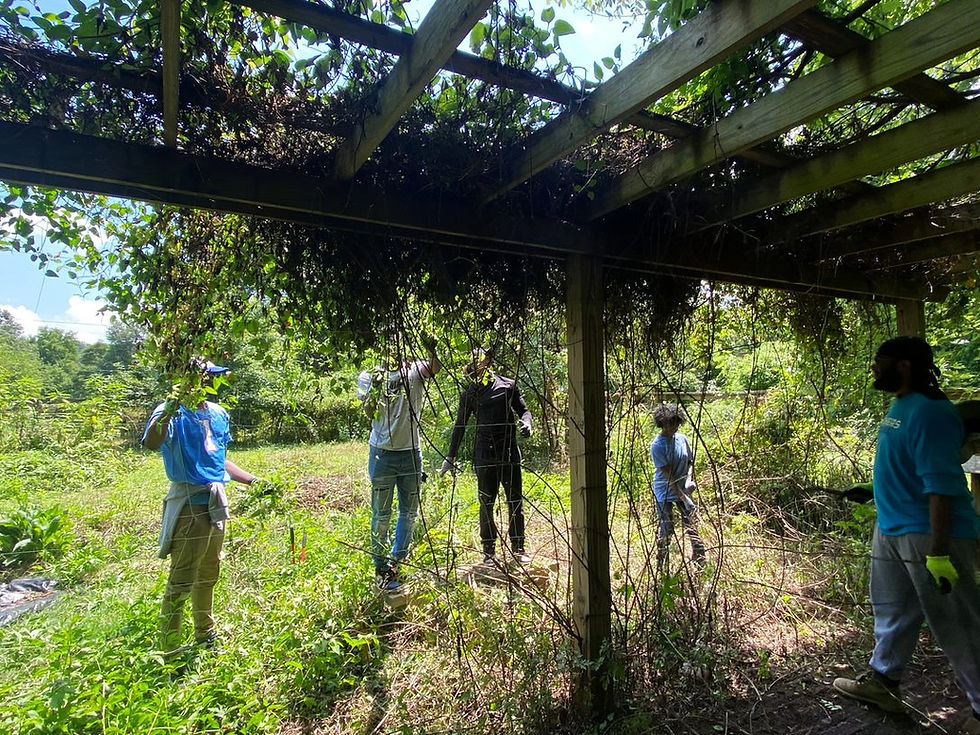Permaculture Design Offers a Solution
- Accokeek Foundation

- Aug 17, 2016
- 3 min read
The term, Permaculture, was coined by Bill Mollison, an Australian scientist, research professor, and author, who borrowed the concept from the book title, Tree Crops, a Permanent Agriculture, written in 1929 by Virginian, J. Russell Smith, a geographer, conservationist, and Wharton School of Business economics professor.A culture can not survive without a permanent, or sustaining, form of agriculture.
written by Patricia Ceglia, Permaculture Designer and Instructor
We can all become producers as well as consumers. Permaculture Design is a methodology for creating human habitats that produce more of our daily needs for food, medicine, water, energy, shelter, waste cycling and fiber. Permaculture Design is a process for managing your land and dwelling to be highly productive in an ecological manner. By making relationships between design components, we expand efficiency and create a living system that regenerates itself, rather than depletes itself. The result is increased security and harmony.
I first discovered Permaculture in 1990, after a year of searching for a more ethical design approach than that which I was practicing as a young architect. My boss had just asked me to design a gigantic strip shopping center with a parking lot as large as a football field (not the glamorous type of building I was used to designing as a college student). So I attended Bill Mollison’s workshop at San Xavier Indian Reservation near Tuscon, AZ and was hooked.

Original design created by Permacutlure Design student.
Mollison was inspired by his childhood experience growing up in Tasmania, where he lived next door to aboriginal people. He had the unique opportunity to observe their lifestyle, and later compare it to that of his western culture. He noticed that natives did not live in a true wilderness, but rather cultivated their forest ecosystem. If they observed an animal or fish dwindling in numbers, they stopped hunting it until it recovered. If a tree species started dying off, they collected its seeds and planted them. Mollison’s experience eventually led him to direct his life path to collecting and sharing universal indigenous knowledge as applied ecology.
What do all native cultures have in common? They practice a behavior code of ethics, making decisions that ensure their own survival, and that of all species. We are all descendant of indigenous peoples. We can learn how to become native to a place, wherever we are, by adopting life-supporting ethics; by becoming intimately familiar with our land and natural resources; and by evaluating our daily needs, planning for the long term, and thinking creatively.
With his graduate student, David Holmgren, Mollison developed the current 2-week Permaculture Design Certificate curriculum so that it could be taught to anyone, anywhere, with no prerequisites for college education or specialized experience. The methodology contains a set of guiding ethics, a set of planning principles, mimicking those found in nature, and a toolkit of strategies for optimizing production. Permaculture Design is site-specific. A design for one site cannot be replicated elsewhere, because it is a response to its particular climatic, geographic conditions, and built structures.
The Accokeek Foundation is offering this 72-hour course over the span of 9 months this fall 2016 and next spring 2017. This time-frame enables participants to digest the comprehensive course content in between classes and produce a design of their own. Many students design their own properties. Others have designed more public habitats, such as schools and neighborhoods. Here are a few examples:
A multi-functional residential “Green Alley,” Baltimore, MD
A vineyard, Colorado
A low-income housing project, Pretoria, South Africa
A multi-family townhouse complex, Annapolis, MD
An organic CSA farm, Eastern Shore, MD
A historic family vacation compound, southern France
Public & private schoolyards in Hershey, PA, Baltimore & Rockville, MD, & Washington DC
A suburban house, Accra, Ghana
A “McMansion” & 26-Unit Apartment Building, Washington DC
Adjacent empty lots converted to a farm/park/school garden, Baltimore, MD
A rural mountain homestead, Montana
A rural cohousing community, Libertytown, MD
Space is available for the 2016/2017 Permaculture Design Certificate Course, classes take place weekends at the Accokeek Foundation from 10 am to 6 pm, on the following dates:
September 24–25: Bioregionalism, Ecosystems, Ethics & Principles, Design Process
October 15–16: Patterns in Nature, Site Analysis, Water Harvesting, Soil & Gardening
November 5–6: Nutrient Recycling, Design for Disaster, Social & Economic Permaculture
March 25–26: Renewable Energy, Natural Building & Small-scale Technology
April 22–23: Grains, Aquaculture, Forest Gardens, Guilds, Agroforestry, Animals, Cash Crops
May 20–21: Forest Garden Installation, Final Design Presentations & Certificate Awards
More information on tuition and registration can be found here.







